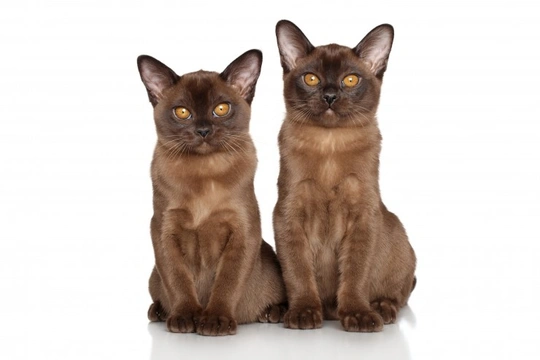
Thoracic Hemivertebra in Cats
Studies have shown that the number of kittens born with thoracic wall deformities is higher than it was first thought and yet there is very little information available on this particular feline abnormality. Pectus excavatum or funnel chest is known to be a congenital abnormality which results in a cat's skeletal tissues lacking rigidity. Research also suggests that larger breeds of cat appear to be more predisposed to being born with thoracic deformities than smaller breeds. As such, responsible breeders would keep a careful eye out for any kittens born with thoracic hermivertebra and would avoid using them in any further breeding programmes should they survive into adulthood.
The Causes
Being a congenital abnormality affected kittens are born with the defect, but luckily the condition is quite rare. However, should a kitten be born with a chest cavity anomaly and it is severe because the condition compresses the space found between their hearts and lungs, it can seriously and negatively impact their overall health and well-being. Kittens first start to show signs of there being something wrong with them when they are anything from five to six weeks old even though they are born with the defect. As time passes and kittens start to grow, their condition worsens and as such the signs of them having the defect become more obvious which includes having trouble breathing, a difficulty gaining any weight and a reluctance to play with their littermates.
Research into the abnormality has also suggested that other factors may play a key role in why some kittens are born with the chest defect and this includes the following:
- Environment
- Nutrition
- High taurine levels present in a cat's blood
Breeds Most Affected by the Condition
As previously mentioned, certain breeds appear to be more predisposed to being born with the abnormality than others and this includes the following breed:
- Burmese - studies have established that anything from three to four percent of kittens are born with the abnormality
Symptoms to Watch Out For
Kittens born with a thoracic abnormality typically show the following symptoms of there being something wrong with them as they get a little older:
- Difficulty breathing
- Trouble gaining weight
- A reluctance to move about and play with littermates
- Heart murmur
Diagnosing the Problem
A vet would need to thoroughly examine a kitten suspected of being born with the chest abnormality with the end goal being to establish if there is any sort of abnormal alignment of their sternum. Sadly, if a kitten’s condition is severe, they don't usually survive and succumb to the abnormality relatively quickly. Other tests a vet would usually recommend carrying out on a kitten suspected of having been born with the condition could include the following:
- X-rays of the chest cavity
Treatment Options
Occasionally, a vet might recommend using a cylindrical splint together with a U-shaped splint that's placed externally and which are specifically moulded to fit a kitten with the abnormality. These splints act like compressors and have been seen to work quite well in certain cases. However, it depends on the severity of the abnormality as to whether the splints would work and therefore resolve the problem. Interestingly, if a kitten responds well to this type of treatment, they usually show a burst of growth. With this said, a kitten’s condition would have to be carefully monitored throughout the treatment and splints adjusted when necessary. Unfortunately, if a kitten's condition is deemed too severe, it is often much kinder to put them to sleep as most kittens do not survive and quickly succumb to the symptoms associated with thoracic abnormalities.



